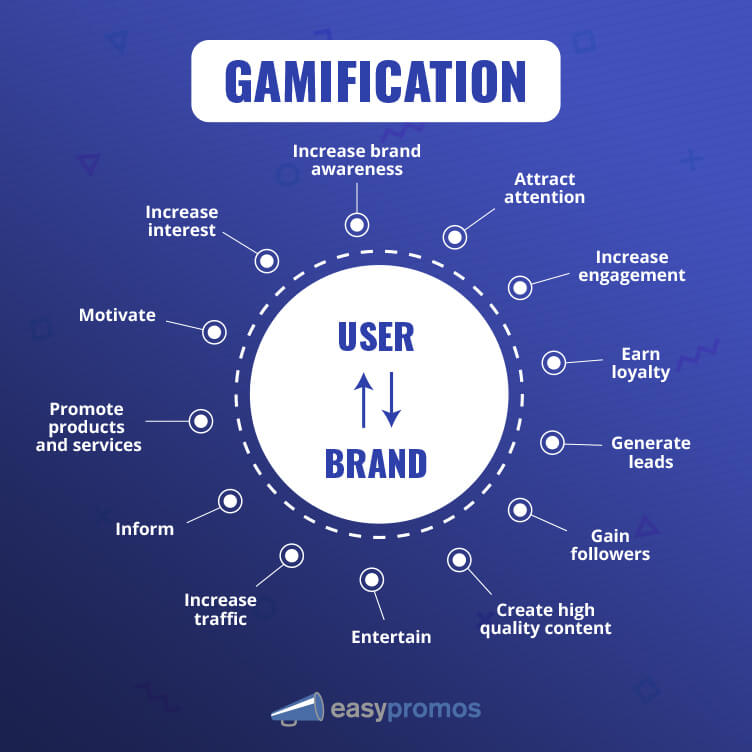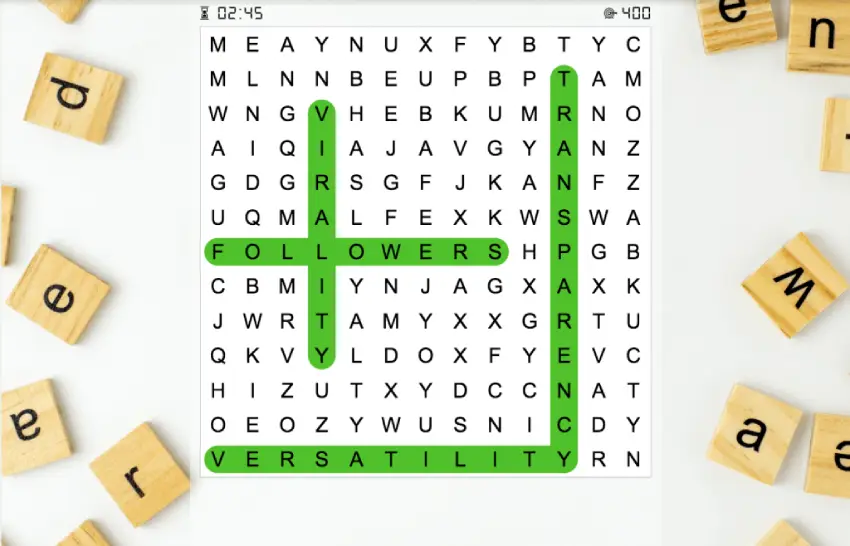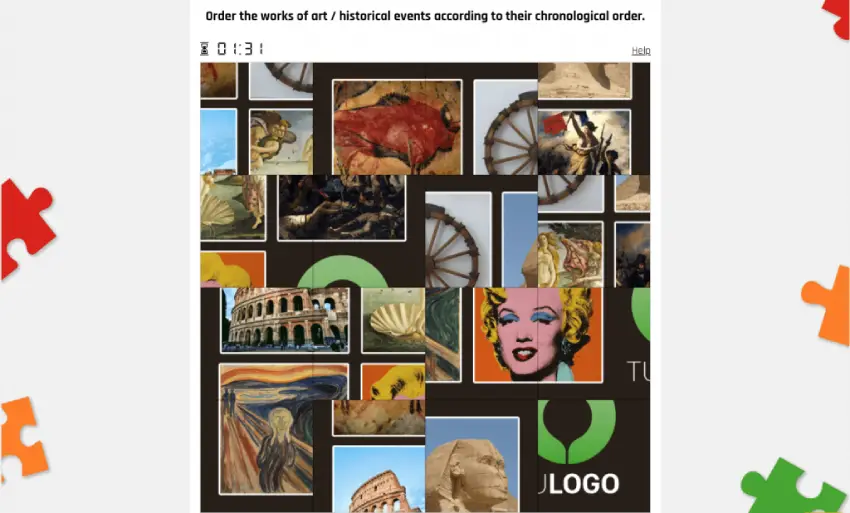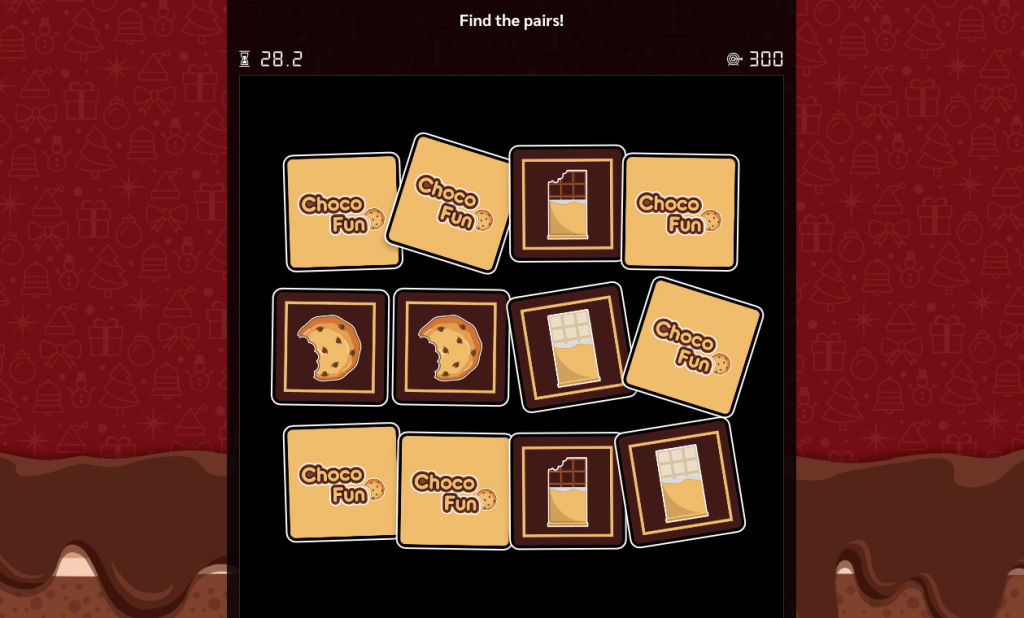Gamification is a digital marketing term used to describe the action of applying typical dynamics, structure, and techniques of game playing to non-gaming environments, such as business, education, health, and marketing among many others.
Gamification has the ultimate goal of engaging the user; the characteristics of game playing make it much easier for online users to identify themselves with the content and brand behind the game.
Many brands have already discovered that gamification can be a great ally when it comes to digital marketing. Marketers can now quickly, easily and without much effort achieve their marketing goals and engage their audience.
The most common objectives that can be achieved with of gamification are:
- Brand awareness
- Attract the users’ attention
- Increase engagement
- Earn loyalty
- Generate leads
- Gain followers
- Create high-quality content
- Entertain
- Increase traffic
- Inform and educate
- Promote products and services
- Motivate
- Increase interest

We will now show you how to use gamification with some marketing examples of the new Easypromos branded mini-games. They’re super helpful when it comes to achieving marketing objectives.
Word Search will increase traffic to your website
To complete a Word Search, you would normally provide the user with the words that they need to find. However, if your marketing goal is to drive traffic to your website or blog, don’t show the hidden words on the same screen! Instead, as part of your marketing strategy, you can locate an external link in the header of the app. It will redirect the audience to a page that you are trying to promote, and that’s where the hidden words will be displayed. This way you generate extra traffic to your blog or website, as without visiting the web page the game cannot be completed.
Once the user knows all the words they need to look for they will go back to the previous page and resolve the game. In our case, the hidden words are virality, followers, loyalty, versatility, and transparency.

To create this example we have used the “Hide the legend” option in the Word Search panel. This way the user must check the hidden words in the content that we refer to. The objective of this example was to send traffic to a website and to inform the user about the products and services offered by the brand.
Gamification is also a fantastic tool to obtain data, entertain the audience and create high-quality content. You can also introduce products and services, but also attract attention and increase user engagement.
Puzzle will help you target a niche audience
Let’s say you’re a museum manager trying to gather data of future museum visitors. You create an online Puzzle and share it on social media networks, asking your followers to order chronologically different works of art.
In this type of promotion, you will find two different types of users. There will be experts that have the knowledge to complete the game because they’re interested in art. But there will be also people who will not be able to finish the Puzzle without doing online research.

At the end of the game, you will have information about the participants that completed the Puzzle in the shortest time. But apart from reaching your niche audience, you will also have informed a wider number of online users about a topic that they weren’t familiar with. This might generate their interest, making them potential future customers. As in the previous example, the gaming application achieves more than just one marketing goal. It informs, generates high-quality content and attracts the attention of a wider audience.
Memory: Promote products and services
Gamification in marketing has also another purpose. Brands use games as an extra tool to advertise and promote their products and services, it is called advergaming, and it is the development of games used to promote products and services.
Face to face with the Christmas season, there are thousands of companies that are trying to boost their sales and persuade the public to choose their brand over hundreds of others. Winter holidays are the peak season for shopping malls, especially toys and fragrance shops but candy and pastries also go like hotcakes!
A marketer of a company that experiences a big rise in profits during Christmas will want to promote the best selling products to a wider audience, and this can be achieved with a quick and easy Memory game. Through a game like this, you expose your audience to the products that you want to promote, as you choose the pictures that the users will try to match.

By the end of the game, the participants will have been exposed to the products quite a few times. Therefore the brand awareness of your company will be increased, and the audience will be able to differentiate your products from the competitors’.
Interested in finding out more about our new branded mini-games? You can now reate your free account with Easypromos. And in case of any questions, don’t hesitate to contact us through our Online Chat!